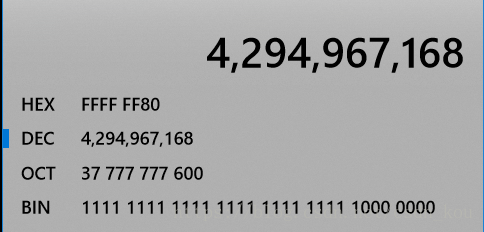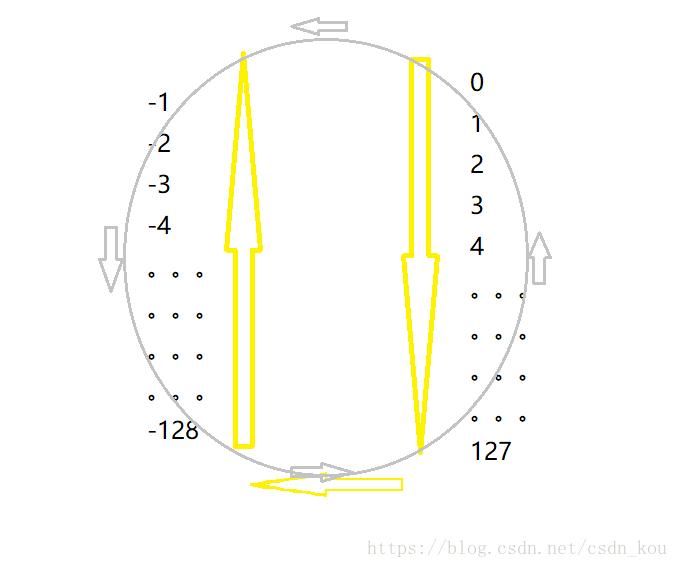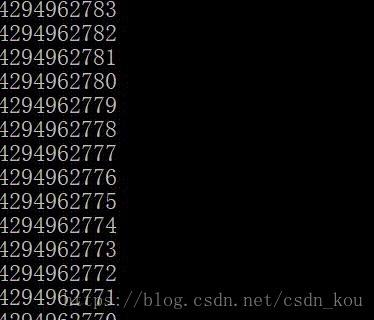1.第一题
int main()
{
int a = 128;
printf("%u\n", a);
system("pause");
}输出结果
128
#include <stdio.h>
#include <stdlib.h>
int main()
{
char a = 128;
printf("%u\n", a);
system("pause");
}输出结果
4294967168

因为有符号字符型其范围为-128~127
127用二进制表示为:0111 1111,
128表示为1000 0000,这里发生溢出,因为第一位为1,为符号位,表示负数,即-128
看到这里是不是一头雾水,网上有很多方法解释一同看完还是不懂。所以我画了一张图来解释

有符号字符型其范围为-128~127
所以127的下一个数字是-128不是128
2.第二题
#include <stdio.h>
#include <stdlib.h>
int main()
{
unsigned i;
for (i = 0; i >= 0; i--)
{
printf("%u\n", i);
}
system("pause");
}
为什么输出结果是这样呢?
无符号数永远大于0
2.1
#include <stdio.h>
#include <stdlib.h>
unsigned char i = 0;
int main()
{
for (i = 0; i <= 255; i++)
{
puts("Hello World");
}
}3.第三题
#include <stdio.h>
#include <stdlib.h>
int main()
{
char a[1000];
int i;
for (i = 0; i < 1000; i++)
{
a[i] = -1 - i;
}
printf("%d\n", strlen(a));
system("pause");
}strlen()遇到0就停止,那么他什么时候遇到’\0’呢?
当i = 127的时候 a[i] = -128;那么他的下一个数字是多少呢?是-129吗?
4.第四题
int main()
{
short num = 32767;
short int a = num + 1;
printf("%d\n", a);
system("pause");
}32767(有符号的短整型能表示的最大值)
结果:-32768

记:有符号的短整型能表示的最大值




 本文探讨了C语言中有符号字符型的输出问题,特别是数值溢出的现象。针对一道面试题,解释了为什么128在有符号字符型中会变为-128,并通过图表辅助理解。同时,文章还讨论了其他相关面试题目,包括无符号数的特点、strlen函数的工作原理以及有符号短整型的最大值转换等。
本文探讨了C语言中有符号字符型的输出问题,特别是数值溢出的现象。针对一道面试题,解释了为什么128在有符号字符型中会变为-128,并通过图表辅助理解。同时,文章还讨论了其他相关面试题目,包括无符号数的特点、strlen函数的工作原理以及有符号短整型的最大值转换等。

















 7493
7493

 被折叠的 条评论
为什么被折叠?
被折叠的 条评论
为什么被折叠?








